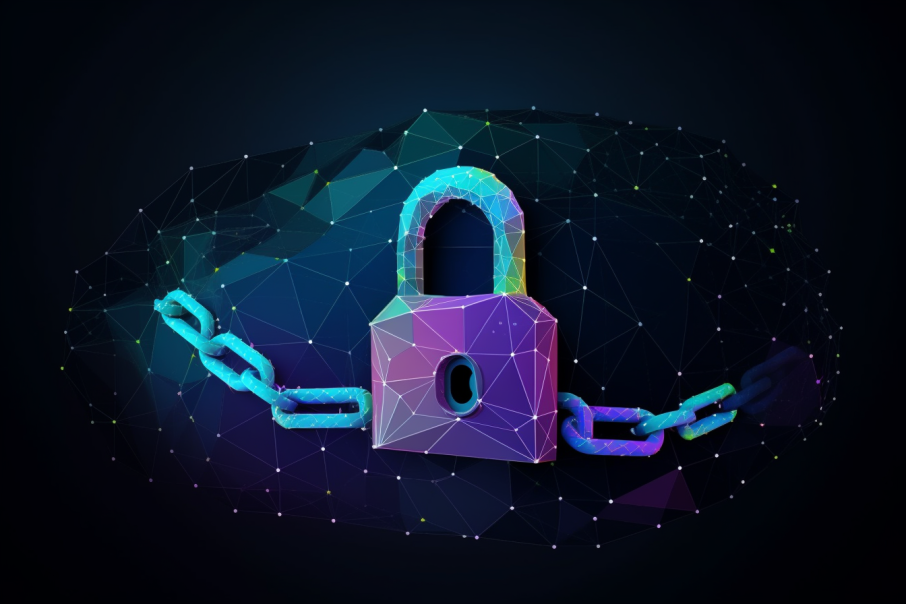
Data Privacy and Security
We all have a subconscious desire for control over our lives. When it comes to protecting ourselves from potential threats like identity theft or fraud, nothing beats taking proactive steps toward safeguarding our sensitive information. Especially because with the rise of digital technology comes an increased risk of cybercrime. Therefore, it’s up to us as individuals to take control of our own data privacy and security.
In this article, we’ll be diving into the world of data privacy and security. What it is, why it matters, and how we can ensure our online safety in today’s increasingly connected world. From setting strong passwords and two-factor authentication to understanding the implications of sharing data with third parties, there are many ways to protect yourself against cybercriminals. Let’s begin!
Data Classification and Handling
From access control to encryption techniques, it is essential to take each step in the data handling process with utmost care. Through classification of the data and rigorous retention standards, we can prevent any unauthorized use or disclosure of confidential information. With clear policies on who has access to which data, you can be sure your users’ personal details remain safe.
Additionally, incident logging and auditing procedures can help monitor activities surrounding sensitive material and identify unusual activity. Keeping up-to-date with all these powerful tools will put you ahead of potential attackers and keep your systems prepared.
So let’s make sure all our bases are covered – from encrypting stored data to monitoring suspicious behavior – so we can protect our users’ information!
Privacy Regulations and Compliance
Compliance audits are crucial to ensure that organizations are following regulations and protecting user data. In addition, strong encryption tools are necessary to protect sensitive information, while risk assessment is an essential part of any data security strategy, as it helps identify potential threats.
User authentication practices can help verify that only authorized users have access to corporate networks or confidential documents. Finally, anonymizing user data provides additional protection by preventing data from being linked back to individual people.
To ensure the effective implementation of these measures, it is important to conduct regular audits. This is to evaluate how well processes are working and whether there is room for improvement. Audits will reveal gaps in existing policies. It highlights areas requiring further attention, such as insufficient encryption standards or inadequate risk assessments.
Additionally, audit results can inform decisions about which technologies would best serve each organization’s needs with respect to privacy and security requirements. Organizations must take their obligations toward protecting user data seriously if they want trust from customers and other stakeholders.
A comprehensive approach involving compliance audits, powerful encryption techniques, thorough risk assessments, and reliable user authentication solutions coupled with proper data anonymization strategies provide an excellent foundation for ensuring long-term success in this area. By taking proactive steps on these fronts now, companies can rest assured that their customer’s data is always secure going forward.
Security Measures and Best Practices
Ah, data privacy and security. It’s a tricky topic to navigate, one that many of us often overlook until it is too late – if ever at all!
While regulations and compliance are essential for managing private information, the true burden falls on putting those protocols into practice with effective measures and best practices. Let’s have a look at some of the steps we can take to ensure our data remains secure in this digital era.
We start off by discussing encryption techniques: using complex algorithms to protect sensitive information from unauthorized access. This could be anything from passwords or financial numbers to health records stored in databases – any kind of information you would like to keep safe from prying eyes should be encrypted!
Additionally, data anonymization is another way companies can use when handling user-generated content without compromising their anonymity.
Of course, these strategies are only as good as they are implemented correctly, which means cloud security must also come into play. Access control ensures that individuals cannot gain entry unless authorized. Meanwhile, identity verification helps confirm a person’s identity before granting them permission to view certain areas. With these tools in place, your confidential data will remain exactly that – confidential!
In short, keeping our data secure requires more than just laws and governance but sound technology implementation as well. If done right, businesses need not worry about violations or other potential risks down the line. After all, nobody wants their personal details floating around aimlessly across the web!
Data Breach Prevention and Response
When it comes to data breach prevention and response, there are several steps organizations can take. Firstly, they should have clear investigation protocols so that they know exactly what to do when a breach occurs. This includes having encryption protocols and data anonymization techniques ready to go.
Secondly, an audit trail of all accesses and changes made to the system must be maintained. This helps identify any suspicious activities as soon as possible.
Lastly, identity management is essential for proper authentication and authorization processes. A strong password policy should also be implemented to ensure the security of user accounts on the system.
To stay ahead of potential threats, organizations need to remain vigilant about their data privacy policies and regularly review them. They should also assess their existing tools and technologies periodically for vulnerabilities that could potentially lead to a breach.
Additionally, employee education should is important to conduct regularly around cyber security best practices. It can help avoid phishing attempts or downloading malicious content from unknown sources.
It’s critical for businesses today to make sure their systems are secure against unauthorized access or manipulation at all times. Successful implementation of these measures will help protect valuable customer information while preserving trust with stakeholders.
Data Privacy and Security Awareness
Now that we’ve discussed data breach prevention and response, let’s talk about data privacy and security awareness. As a data privacy and security analyst, I’m tasked with understanding the risks associated with sharing sensitive personal information online and developing strategies to protect it. To ensure our digital assets are secure, there are certain protocols that should be followed.
First off, creating clear data-sharing protocols is essential. These protocols should outline which types of confidential information can be shared publicly, as well as any restrictions or limitations in place for how that information is used. Additionally, organizations need to have robust access control systems in place so they know who has access to their data.
To further safeguard against potential breaches, strong encryption techniques should also be utilized when storing confidential records online. This will help prevent malicious actors from accessing these files without permission.
And finally, implementing regular data auditing techniques can help identify any vulnerabilities or suspicious activity before it leads to compromise. In other words, by taking proactive steps like these, we can protect individuals’ right to privacy.
Here’s a quick list of practices organizations can implement to increase their overall levels of data protection:
- Developing comprehensive data-sharing policies;
- Implementing effective access control systems;
- Utilizing strong encryption methods; and
- Conducting frequent audits of IT infrastructure.
By following best practices such as those outlined above, businesses can better protect themselves – and the people whose personal information they store – from cyber threats.
Conclusion
Data privacy and security are an important part of any organization’s operations. By understanding the importance of data classification, implementing appropriate privacy regulations, following best practices for security measures, having the plan to prevent breaches, and raising awareness among staff members, organizations can ensure their information remains safe and secure.
As Dostoevsky once said ‘The degree of civilization in a society can be judged by entering its prisons.’ The same applies to our digital world – we must all take responsibility for protecting the data entrusted to us or face the consequences.

